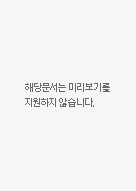

-
미리보기
서지정보
· 발행기관 : 덕성여자대학교 인문과학연구소
· 수록지 정보 : 인문과학연구 / 20호 / 49 ~ 74페이지
· 저자명 : 이숙희
초록
북한산은 신라시대부터 조선시대에 이르기까지 불교와 관련되어 꾸준히 사찰이 건립되었으며 이와함께 불상과 불화, 석탑, 부도 등이 다수 조성되어 왔기 때문에 우리나라 불교미술의 흐름을 연구하고 이해하는데 중요한 불교 유적지이다. 특히 고려시대에는 수도 개경과 함께 삼경의 하나인 남경(南京)으로중시되어 북한산에는 적지 않은사찰과 불상, 불탑이 조성되면서 불교신앙처로 알려져 왔다.조선시대에는 성리학 이념의 억불숭유 정책 하에서 사원의 건립이 현저하게 줄어들었으나 여전히 북한산은 불교의중심지가 되어 왕실을 비롯한 다양한 계층의 후원을 받으면서 불사가 이루어졌다.
북한산 일대에는 현재 사찰과 절터가 많이 남아 있지만 대부분 폐사되어 원래의 모습은 거의 찾아볼 수 없다. 불교미술 역시 통일신라시대 이전으로 올라가는 예들은 거의 없고 대부분 고려와 조선시대에 조성된 것이다.고려 초기에도선국사가 개창했다고 전하는 도선사의 전신인 도선암(道詵庵)도이 시기에 건립되었을 것으로추정된다.도선암은조선 초기에 이르러세종의 딸인 정의공주의 원찰이 되었으며 정의공주는 남편 안맹담과 함께 1451년(문종 1) 에 문수사를 중창하는 등 중창불사를 크게 일으켰다.
도선사의 마애불입상과 목조아미타삼존불상, 독성상 모두 조선 후기에 조성된 것으로 당시 불교조각의 성격과 불교신앙의 흐름을 말해준다. 조선 후기에는 불교계가 크게 위축되었던 조선 전기와는 달리불교와 승려에 대한 인식이 달라지면서 전국적으로 불사가 크게 늘어나는 등 불교조각도 많이 조성되었다.특히 서울과 경기 지역에 많은 사찰이 중창되었는데 흥선대원군이나 조대비,민비 등이 각기 후원한사찰로는서울 돈암동 흥천사를 비롯하여 서울 수유리 화계사와 경기도 남양주 흥국사와파주 보광사, 인천 운남동 용궁사 등이 대표적인 예이다.이로 인해 북한산에도사찰이 새로 건립되거나 중창되면서 불교조각, 불화, 석탑들이 조성되었다.20세기 초까지도고종이 도선사의 법당과 대방의 중수에 깊게 관련되어 후원하는 등 불사는 지속적으로 이루어졌다.
도선사 마애불입상과 석조독성상은 민간신앙과 불교가 융합한특이한 예로서불상의 이미지 보다는중생들의 염원을 담은 듯 도교적인 산신사상과 결합되어 토속적인 느낌이 강하다.이는조선이 완전히무너지기 직전인19세기 중엽에도 김좌근을 비롯한 안동김씨 세력에 의해 도선사를 중심으로 북한산 일대에서 여전히 불사가 이루어지고 있음을 말해준다. 더욱이조성연대를 알려주는명문이 있는 조선 후기의 마애불상 중 다수가 서울지역에 조성되었다는 점은 이러한 사실을 뒷받침해 준다.도선사의 중창을 계기로약화되어 있던 안동김씨의세력을 다시 회복할려는 정치적인 염원이 담겨 있었을 것으로 보인다.또한 목조아미타불상과 대세지보살상을 조성한 조각승 인성은 강원도 백담사의 목조아미타불좌상과 전라남도화순 쌍봉사 목조지장보살좌상과 시왕상도 제작하였다는 점에서 다른 지역의 불교조각과도관련이 있어조선 후기의 불교조각 뿐 아니라 조각승의 유파관계 연구에도 중요한 자료라 할 수 있다.영어초록
Temples were consistently built and established in Bukhansan since the Silladynasty to the Joseon dynasty due to its correlation with Buddhism. Bukhansan isa very significant Buddhist historical site for studying and understanding the transitions of Korea’s Buddhist art because numerous Buddha statues, paintings,stonepagodas, Buddha, etc. were also created along with the temples.
Especially during the Goryeo dynasty, numerous temples, Buddha statues, andpagodas were built in Bukhansan near Namgyeong (南京), which is one of the threecapitals of the time along with Gyegyeong, and Bukhansan has been known as aplace of devout Buddhist faith.
During the Joseon dynasty, establishment of temples significantly decreasedunder the Uk-bul-soong-yoo (promotion of Confucianism and oppression of Buddhism) policy of the Neo-Confucianism ideology. However, Bukhansan remaineda pivotal point of Buddhism throughout the oppression and received support fromvarious social stratums including the royal family to maintain the temples.
Currently, there are many temple sites throughout the Bukhansan region,butmost temples have been ruined and it is difficult to find its original forms. As forBuddhist arts, artworks dating back to before the unified Silla dynasty are rarelyfound. Majority of the retrieved artworks are from the Goryeo and Joseon dynasty.
Doseonam (道詵庵), which is known to be the forerunner of Doseonsa templeestablished by monk Doseonguksa during the early Goryeo dynasty, is assumedto have been built during this time as well. Doseonam became the bodhimandaofPrincess Jeong-Ui, the daughter of King Sejong, during the early Joseon dynasty.
Princess Jeong-Ui and her husband AhnMeng Dam rebuilt Munsusa temple in 1451(Munjong 1st) and largely contributed to temple reconstructions.
The stone-carved Buddha, wooden Amita Buddha Triad, and Dokseong statuein Doseonsa templewere created during the late Joseon dynasty, and it indicatesthe characteristics of Buddhist statues and Buddhist faith of the time. In contrastto the early Joseon dynasty when Buddhism was widely repressed, the perceptionof Buddhism and monks began to change, and it led to a nation-wide increase ofBuddhist services and Buddha sculptures. Many temples were rebuilt especiallyin the Seoul and Gyeonggi regions, and the representative examples of the templereconstruction funded by HeungseonDaewongun, Jo Daebi, Min Bi, etc. includeHeungcheonsa temple in Donam-dong, Seoul, Hwagyesa temple in Suyu-ri, Seoul,Heungguksa temple in Namyang-ju, Gyeonggi-do, Bogwangsa in Paju, and Yonggung-sa in Woonnam-dong, Incheon. As a result of thereconstruction, temples, Buddhist sculptures, paintings, and stone pagodas were newly constructed or rebuiltin the Bukhansan region.Buddhist services continued to flourish until the early20thcentury through the help of emperor Gojong, who supported the restoration ofthe Buddhist sanctuary of Doseonsa temple.
The stone-carved Buddha statue and stone Dokseong statue in Doseonsa templeare interesting examples of a fusion of folk religion and Buddhism. It appears toretain the hopes and desires of mankind rather than an image of a Buddha statue,and it has a strong pagan sense based on its fusion with mountain spiritideologiesof Taoism. This indicates that Buddhist services survived in Doseonsa temple ofBukhansan even throughout the mid 19th century, which is immediately before thefall of the Joseon dynasty, through the influence of the Kim lineage of Andong, suchas Kim JwaGeun. Moreover, the fact that majority of stone-carved Buddhastatuesfrom the late Joseon dynasty are built in the Seoul region supports such historicalfacts. It appears to retain the political hopes and desires of restoring the power of theKim lineage of Andong, which was weakened since the reconstruction of Doseonsatemple. Also, the fact that monk sculptor Insung, who created the wooden AmitaBuddha sculpture and Daesaeji Buddha statue, also created the seated wooden Amita Buddha sculpture of Baekdamsa temple in Gangwon-do and the seated woodenKsitigarbha Bodhisattvaand Siwang statue indicate his relations to Buddhist sculptures from other regions, which makes it a significant reference for studying theBuddha sculptures from the late Joseon dynasty, as well as the sect relations ofmonk sculptors.참고자료
· 없음태그
-
자주묻는질문의 답변을 확인해 주세요

꼭 알아주세요
-
자료의 정보 및 내용의 진실성에 대하여 해피캠퍼스는 보증하지 않으며, 해당 정보 및 게시물 저작권과 기타 법적 책임은 자료 등록자에게 있습니다.
자료 및 게시물 내용의 불법적 이용, 무단 전재∙배포는 금지되어 있습니다.
저작권침해, 명예훼손 등 분쟁 요소 발견 시 고객센터의 저작권침해 신고센터를 이용해 주시기 바랍니다. -
해피캠퍼스는 구매자와 판매자 모두가 만족하는 서비스가 되도록 노력하고 있으며, 아래의 4가지 자료환불 조건을 꼭 확인해주시기 바랍니다.
파일오류 중복자료 저작권 없음 설명과 실제 내용 불일치 파일의 다운로드가 제대로 되지 않거나 파일형식에 맞는 프로그램으로 정상 작동하지 않는 경우 다른 자료와 70% 이상 내용이 일치하는 경우 (중복임을 확인할 수 있는 근거 필요함) 인터넷의 다른 사이트, 연구기관, 학교, 서적 등의 자료를 도용한 경우 자료의 설명과 실제 자료의 내용이 일치하지 않는 경우
“인문과학연구”의 다른 논문도 확인해 보세요!
-
임영대군과 오산군을 통해서 본 조선초기 종친의 역할 20 페이지
조선은 건국 초기부터 왕도정치와 민본의 이념을 내세우며, 새로운 국가의 모습을 형성하고자 노력했다. 건국 시조가 되었던 태조를 비롯해 태종·세종·세조 등은 강한 정치권력을 바탕으로 국정을 운영하고자 했다. 특히 태종과 세조는 왕위에 오르기 위해 자신과 경쟁하거나 자신을 지지하지 않았던 많은 수의 종친들을 제거했다. 하지만 역설적으로 조선초기의 국왕들은 강력.. -
삼각산 도당제의 특징과 의미 20 페이지
본고에서는 경기도 북부의 대표적인 도당굿인 ‘삼각산 도당굿’의 특징과 의미를 살펴보았다. 삼각산도당굿의 가장 큰 특징은 산신의례가 강화되어 나타난다는 것이다. 이것은 의례에 영향을 미치는 주요한요소 중의 하나가 물적 토대라는 것을 잘 보여주는 것이다. 이 연구를 통해 대략적이나마 경기 북부 도당굿의 권역과 계통을 잡아볼 수 있었다는 데에서 본고의 의의를 찾.. -
조선후기 遊山記에 나타난 北漢山의 불교 18 페이지
북한산은 삼국시대 이래 불교 성지로서 수많은 사찰과 승려의 자취를 간직하고 있다. 특히 북한산의불교는, 태고 보우 유적의 중요성과 더불어 북한산성을 수호하고 전국 사찰을 이끄는 도총섭이 주석하였다는 점에서도 조선 후기 불교사에서 중요한 위치를 차지하고 있다. 조선후기 수많은 이들이 전국의 산을 유람하고 기록을 남겼는데, 북한산도 인기 있는 유람지 중의 하나..
찾으시던 자료가 아닌가요?
지금 보는 자료와 연관되어 있어요!
문서 초안을 생성해주는 EasyAI



